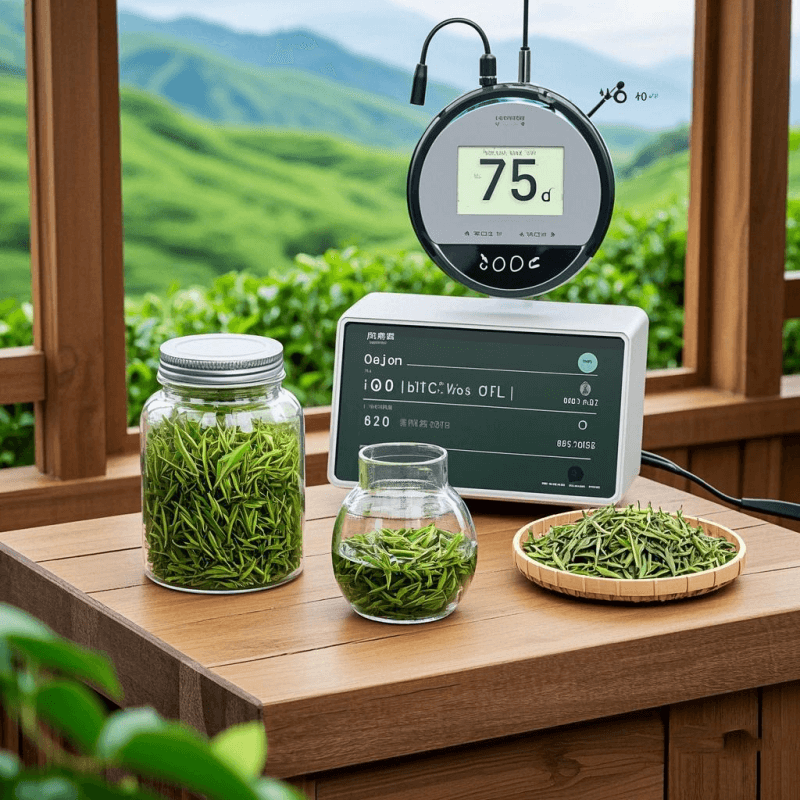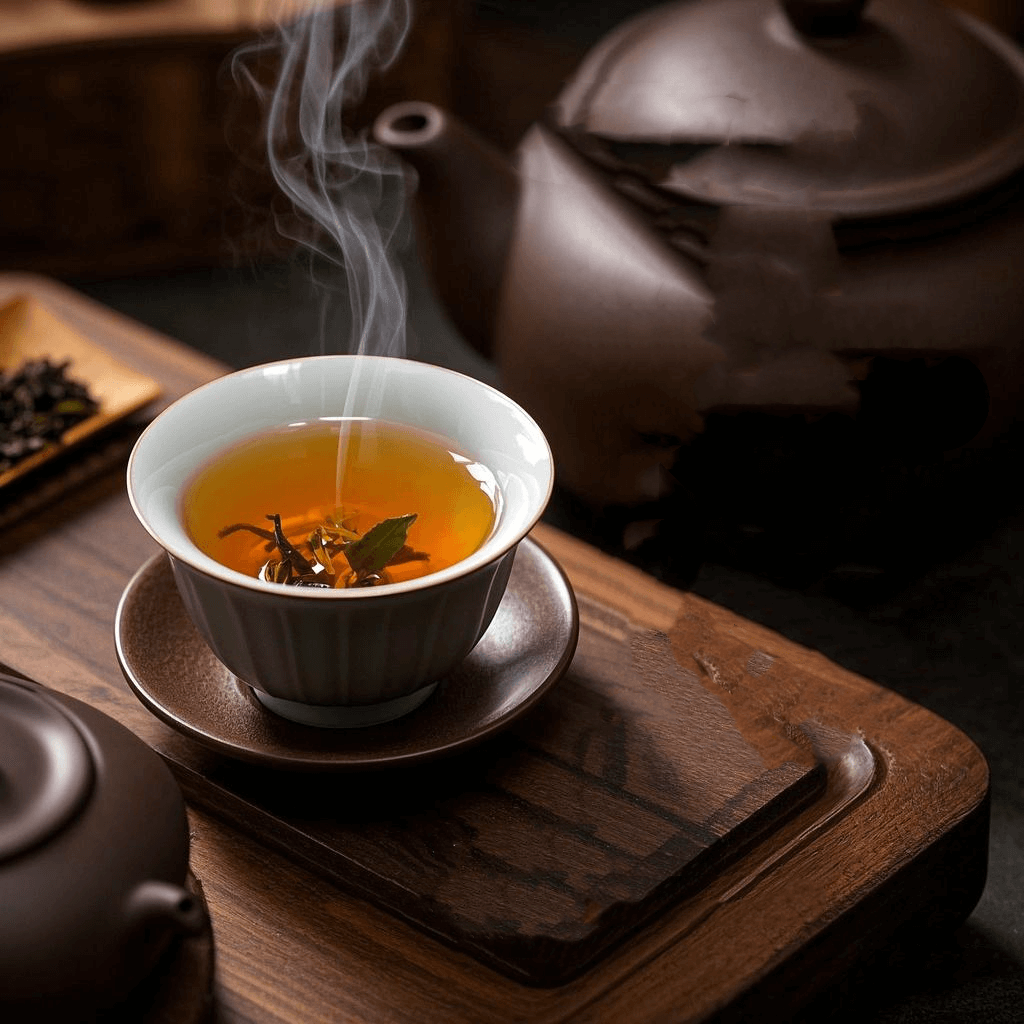In the world of specialty teas, few brews captivate the palate like milk oolong tea. With its creamy texture, delicate sweetness, and aromatic complexity, this tea has become a favorite among connoisseurs and casual drinkers alike. But what exactly is milk oolong tea, and why does it stand out for its remarkably smooth finish?
This article unravels the mysteries of milk oolong tea, exploring its origins, flavor profile, unique processing, and health benefits. Whether you’re a seasoned tea enthusiast or just starting your journey, understanding what is milk oolong tea will deepen your appreciation for this extraordinary brew. Let’s dive in.
1. Introduction: What Is Milk Oolong Tea and Why People Love It
Milk oolong tea is a type of semi-oxidized oolong tea celebrated for its rich, creamy mouthfeel and subtle sweetness—qualities that evoke the smoothness of steamed milk, hence its name. Unlike teas flavored with dairy, its milky essence comes from natural compounds in the leaves and careful processing. The question of what is milk oolong tea often arises from its distinct character: it’s neither purely floral like light oolongs nor deeply roasted like dark varieties, but a harmonious middle ground that charms both new and experienced drinkers.
What makes it beloved? Its versatility. Enjoyed hot or iced, paired with desserts or savories, milk oolong tea offers a comforting, indulgent experience without added sugars or additives. Let’s start by tracing its roots to understand how this unique tea came to be.
2. Origin of Milk Oolong: From Taiwan to the World
The story of milk oolong tea begins in Taiwan, specifically with the Jin Xuan tea cultivar, developed in the 1980s by the Taiwan Tea Research and Extension Station. Breeders aimed to create a plant that combined the hardiness of traditional oolong varieties with a naturally creamy flavor profile. The result was a tea that quickly became synonymous with milk oolong tea, thanks to its thick, succulent leaves and inherent sweetness.
The Jin Xuan Cultivar: The Heart of Milk Oolong
- Genetic Makeup: A cross between Taiwanese wild tea and the famous Tieguanyin cultivar, Jin Xuan leaves are larger and richer in amino acids, contributing to the tea’s smooth, umami-like taste.
- Growing Conditions: Thrives in high-altitude regions like Alishan and Lishan, where cool climates and misty mornings slow leaf growth, concentrating flavors.
While Taiwan remains the birthplace of premium milk oolong tea, variations are now produced in China and other tea-growing regions. However, authentic Taiwanese milk oolong is prized for its balance of creaminess, floral notes, and a distinct “milk” aroma that sets it apart.
3. What Does Milk Oolong Tea Taste Like? Flavor and Aroma Notes
Answering what is milk oolong tea requires describing its sensory profile—a key reason it’s so beloved. Here’s what to expect:
Flavor Profile
- Creamy Undertones: The first sip reveals a smooth, velvety mouthfeel, reminiscent of steamed milk or whipped cream.
- Sweet Florals: Delicate notes of gardenia, jasmine, or orchid linger, balanced by a subtle honeyed sweetness.
- Nutty Finish: A faint almond or hazelnut undertone adds depth, especially in older or more oxidized batches.
Aroma
- Warm and Inviting: The dry leaves emit a rich, milky fragrance with hints of fresh-baked pastries.
- Layered Complexity: As it steeps, the aroma evolves from creamy to floral, with a subtle grassy freshness from the semi-oxidized leaves.
Expert Quote: “Milk oolong tea is a masterclass in balance—its creaminess doesn’t overwhelm but enhances the tea’s natural sweetness,” says tea sommelier Emma Chen.
4. Why Is Milk Oolong Tea So Smooth? Processing and Cultivar Secrets

The secret to milk oolong tea’s signature smoothness lies in two factors: the Jin Xuan cultivar and its unique processing steps.
1. Cultivar Characteristics
- High Amino Acid Content: Jin Xuan leaves contain more L-theanine and amino acids than many oolong varieties. These compounds create a soft, rounded mouthfeel and reduce bitterness.
- Thick Leaf Structure: The robust leaves hold up to multiple steeps, releasing their creamy essence gradually rather than abruptly.
2. Processing Magic
- Semi-Oxidation (30–40%): Unlike light oolongs (10–20% oxidation), milk oolong undergoes moderate oxidation, which breaks down harsh tannins while preserving the leaf’s natural sugars and amino acids.
- Gentle Rolling: After oxidation, leaves are rolled into tight, semi-open curls, allowing for even steeping and slow flavor extraction.
- Slow Drying: Low-temperature drying ensures the leaves retain moisture and texture, enhancing their creamy mouthfeel.
3. Terroir Impact
High-altitude growing regions like Taiwan’s Alishan Mountains contribute to the tea’s smoothness by:
- Slowing leaf growth, leading to more concentrated flavor compounds
- Providing cool, misty conditions that reduce stress on the plants, resulting in tender, succulent leaves
5. Health Benefits of Milk Oolong Tea You Should Know
Beyond its delightful taste, milk oolong tea offers notable health benefits, thanks to its unique combination of compounds.
Antioxidant-Rich
Like all oolongs, milk oolong tea is packed with polyphenols, including catechins and theaflavins, which fight free radicals. A study by Healthline links oolong consumption to improved heart health and metabolic function, with milk oolong’s amino acids adding an extra layer of wellness.
Balanced Caffeine
With 30–50mg of caffeine per 8oz cup, milk oolong tea provides a gentle energy boost, paired with L-theanine to promote relaxed focus. This makes it ideal for those who want alertness without jitters or crashes.
Hydration and Digestion
- The tea’s smooth texture makes it easy to drink in large quantities, supporting daily hydration.
- Its moderate tannin content aids digestion without irritating the stomach, unlike more astringent teas.
Potential Weight Management Support
Some research suggests oolong teas may enhance fat oxidation and boost metabolism. While milk oolong tea isn’t a miracle weight loss solution, its low calorie count (just 2–5 calories per cup) and satisfying flavor make it a smart 替代 for sugary drinks.
6. How to Brew Milk Oolong Tea for the Best Flavor
To unlock the full creamy potential of milk oolong tea, follow these brewing tips:
Tools You’ll Need
- Gaiwan or Yixing Clay Pot: These vessels enhance the tea’s aroma and allow for precise steeping.
- Kitchen Thermometer: To control water temperature accurately.
- Fine Mesh Strainer: To catch any loose leaves.
Step-by-Step Brewing Guide
- Water Temperature: Heat water to 185–195°F (85–90°C). Avoid boiling water, which can burn the delicate leaves.
- Leaf-to-Water Ratio: Use 1–1.5 teaspoons of loose leaf per 8oz of water. Adjust based on desired strength.
- First Steep: Rinse the leaves with hot water for 5 seconds to awaken them, then steep for 1–2 minutes.
- Subsequent Steeps: Increase steep time by 30 seconds for each round. Milk oolong can be steeped 5–7 times, with each steep revealing new layers of creaminess and floral notes.
Serving Suggestions
- Hot: Sip plain to appreciate its natural smoothness, or add a tiny dash of honey for enhanced sweetness.
- Iced: Brew double-strength, chill, and serve over ice with a slice of lemon or a sprig of mint.
- Pairings: Pair with creamy desserts (tiramisu, panna cotta), buttery pastries, or mild cheeses like brie to complement its rich texture.
7. Conclusion: Why Milk Oolong Tea Deserves a Spot in Your Tea Routine
In answering what is milk oolong tea, we’ve discovered a tea that marries natural creaminess, floral elegance, and health benefits in every cup. Its smoothness isn’t just a sensory delight—it’s a testament to careful cultivation, precise processing, and the unique properties of the Jin Xuan cultivar.
Whether you’re seeking a comforting morning brew, an afternoon pick-me-up, or a sophisticated addition to your tea collection, milk oolong tea delivers. Its versatility and approachability make it perfect for both beginners and experts, while its natural qualities align with modern wellness goals.
Ready to experience the creamy magic for yourself? Discover the creamy essence of milk oolong tea in our premium collection and elevate your tea-drinking experience. With each sip, you’ll understand why this tea has won over hearts and palates worldwide—one smooth, flavorful cup at a time.
Meta Description:Learn what is milk oolong tea and why it’s so smooth. Discover its creamy flavor, Taiwanese origins, health benefits, and expert brewing tips for a delightful tea experience.


Pingback: Osmanthus Oolong Tea: Unveil Its Floral Delight
Pingback: Trendy Oolong Tea Drinks: Quick Recipes for Perfect Sips
Pingback: Oolong Tea and Milk: Flavor & Wellness Guide